After back-to-back draws against Valencia and Barcelona, Real Madrid secured their first run of two consecutive 0-0s since 2006 as they were held on home turf at the Estadio Santiago Bernabéu by Athletic Club.
The Basque side came to town ready to put up a fight in the final La Liga fixture of the decade and they did just that, despite Real Madrid having plenty of chances to put the game to bed. Toni Kroos, Sergio Ramos and Luka Jović all hit the woodwork but none of them could convert to give the hosts the crucial three points that they needed to keep pace with Barcelona at the top of the table.
This tactical analysis of the La Liga fixture between Real Madrid and Athletic Club will provide analysis of the tactics of both teams as they played out a 0-0 draw which will have pleased Gaizka Garitano far more than Zinedine Zidane.
Line-ups
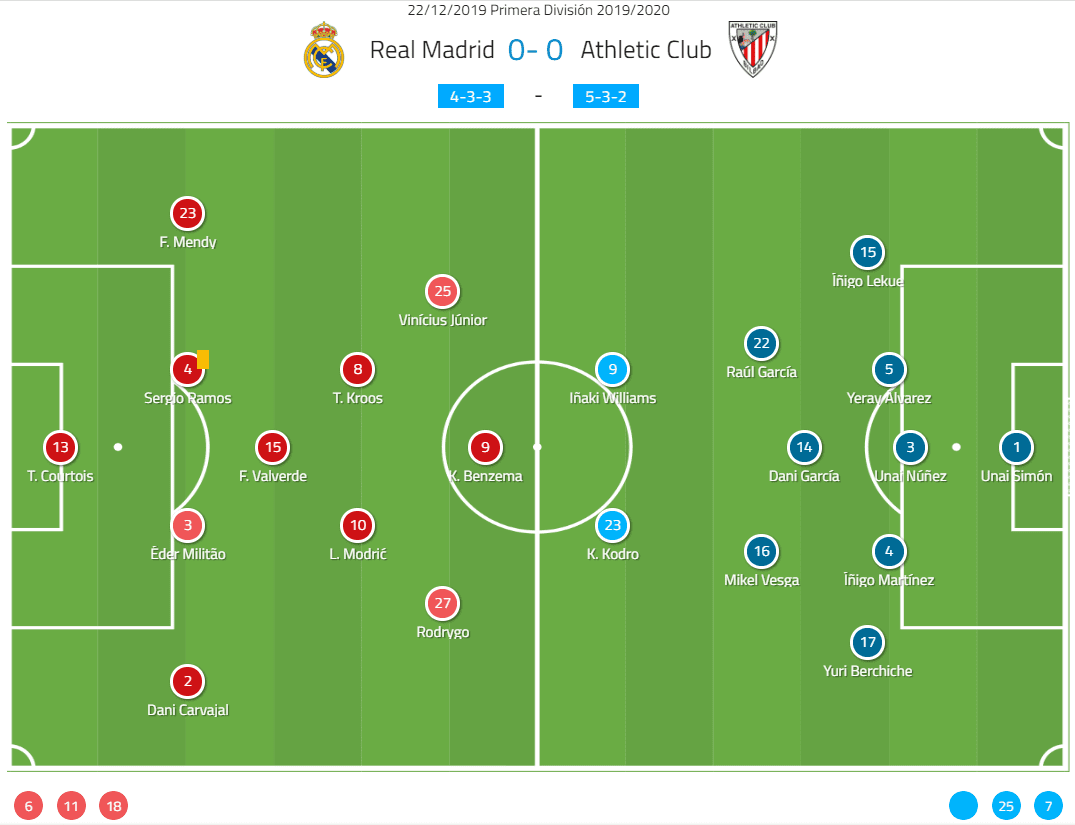
Zidane stuck to his preferred 4-3-3 shape but did make changes from the Clásico, with Casemiro forced out through suspension and Raphaël Varane also rested. In attack, Rodrygo Goes and Vinícius Júnior were preferred to Gareth Bale.
Garitano also sprung a surprise with his formation. Without the likes of Iker Muniain, he was always going to have the choice to mix things up but did so more than expected by fielding a back five, with Unai Núñez coming into the central three as the sweeper, with Dani García taking up the holding midfield role and Kenan Kodro joining Iñaki Williams in attack.
A repetitive theme
In each of the past three games, Real Madrid have recorded more than 25 crosses, compared to their season average of 17.7 crosses per match before this run. It is Zidane’s default approach when things are not going his way, to immediately look to spread the ball wide and cross into the box, often with little effect given that despite ranking second for crosses made in La Liga, they rank eighth for cross completion rate. This explains why it was Garitano’s tactic to force Real Madrid into taking this approach right from the off in this encounter between the two teams.
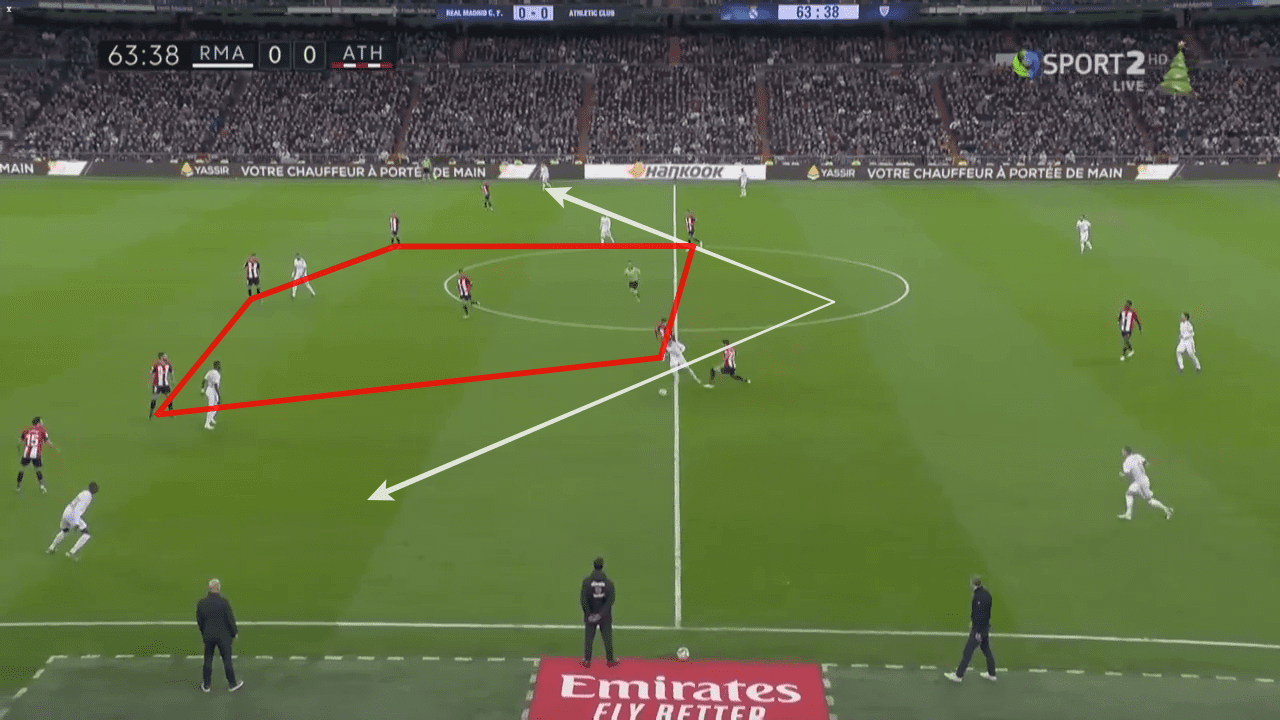
Rather than resorting to a more direct style down the flanks as typically occurs, on this case it was a case of being forced wide. Garitano packed the middle of the park, forcing Luka Modrić and Toni Kroos to drift wider and blocking the path of Fede Valverde, playing in the holding role usually occupied by Casemiro. That resulted in Real Madrid being frustrated each time that they looked to break through the middle, instead being forced to look wide. The end result was that Real Madrid were left with no choice but to direct their attacks down the flanks on 65% of occasions, yet it accounted for just 51% of xG created.
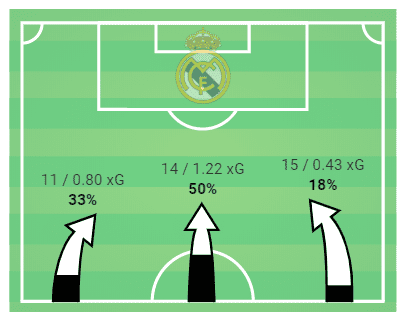
The remaining 49% of xG, or 50% rounded in the above graphic, came from the 35% of chances that came through central positions. It is clear that if Real Madrid are to become more clinical in front of goal, they must do so by looking to direct their play centrally, rather than down the flanks where they rely heavily on Rodrygo, Vinícius and the full-backs Ferland Mendy and Dani Carvajal. With the inexperience of both wingers and Vinícius’ well-known struggles in front of goal, Garitano may not be the last coach to force Real Madrid to play wide in this way.
Athletic’s back three
That previous point could do a disservice to Athletic. Garitano intelligently mixed things up to play a back three for the first time this season in a completely unexpected move which clearly took Real Madrid some time to get used to early on in the tie. Whilst Real Madrid averaged a shot every 4 minutes 30 seconds over the whole tie, they managed just one in the first 15 minutes, showing how Los Blancos failed to find an early way to break down the Athletic defence.
That came in part due to the fact that Garitano knew that should his defence sit deep, Real Madrid would look to exploit any space with the pace of Vinícius and Rodrygo. Instead, however, Yeray Álvarez and Iñigo Martínez provided plenty of cover for Yuri Berchiche and Iñigo Lekue. That prevented the wingers from being able to cut inside and run into spaces, instead forcing the ball back out wide to full-backs who, as addressed previously, were looking to cross into an overly congested penalty area.
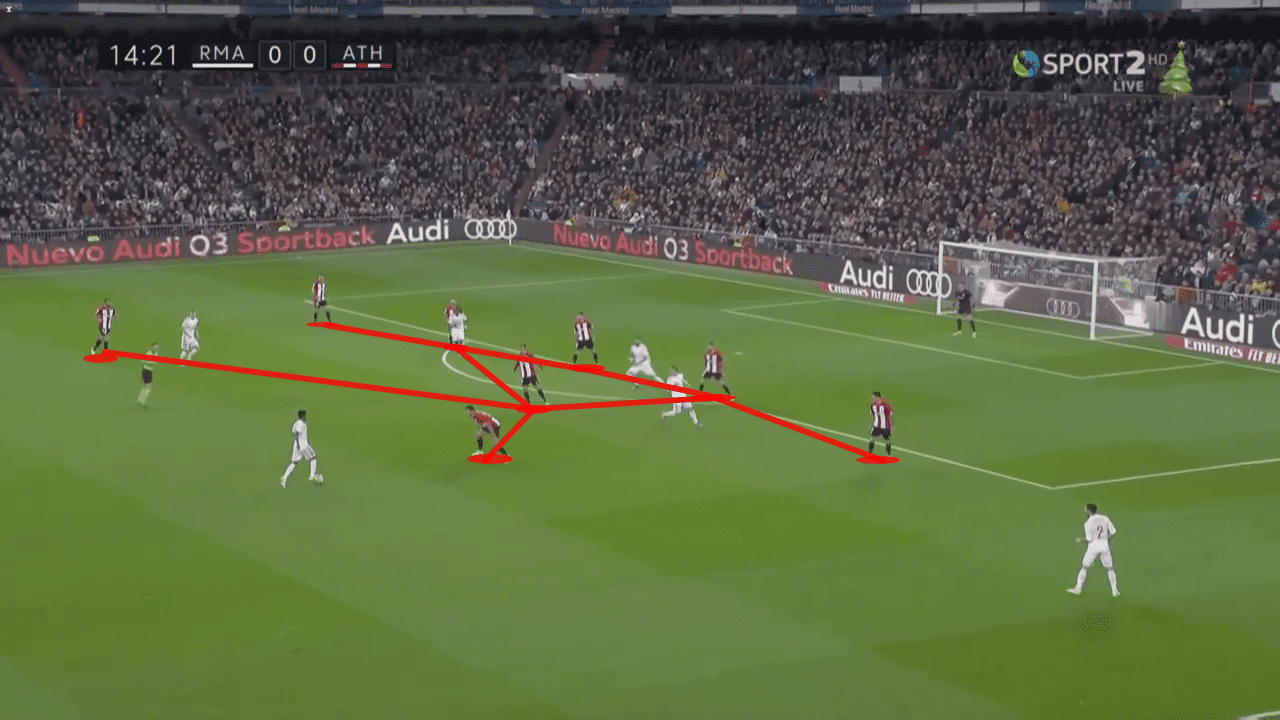
Perhaps the most important element was the role of Dani García. Sitting as the holding midfielder, he formed a triangle with the back three and would cut off any passes into that area, effectively isolating Karim Benzema at all times. You would have to go back to early October against Granada to find a tie at the Bernabéu in which Benzema had a lower xG than the 0.82 he recorded on Sunday, whilst no La Liga team has kept him from scoring and kept his xG below that figure all season at the stadium which he calls home.
The set-up also allowed the other two midfielders, typically Raúl García and Mikel Vesga, to press the two deeper midfielders, usually Kroos and Valverde. That denied them the space or time they needed to pick a gap in the Athletic defence and effectively offered a second line of protection without compromising on Williams or Kodro in attack, who could be ready for any counter-attacking opportunities should play turn over, though it was not a common occurrence.
Casemiro’s absence and its impact
One of the other notable points from how Real Madrid performed was the absence of Casemiro in midfield, though perhaps not as many may have expected. Replaced by Valverde in the holding role, and aided by the fact that Athletic posed little threat for much of the game, the Brazilian himself was not sorely missed. What was felt was the removal of the Uruguayan from his recent midfield role. Modrić is a more than capable alternative, but his offering was not quite the same.
The main factor that was missing was Valverde’s energy in the middle of the park. Sitting in a deeper role, he was reluctant to make the same daring runs forward in possession, instead sticking to a deeper role and visibly holding himself back at times. Rather than continuing to exploit the space in front of him left by Athletic’s low block, he would look to pass the ball. That’s why his number of progressive runs was unusually high, nine compared to a season average of 2.07, but of those, only one was a completed run in the opposition half. Valverde saw plenty of the ball, but little where it mattered.
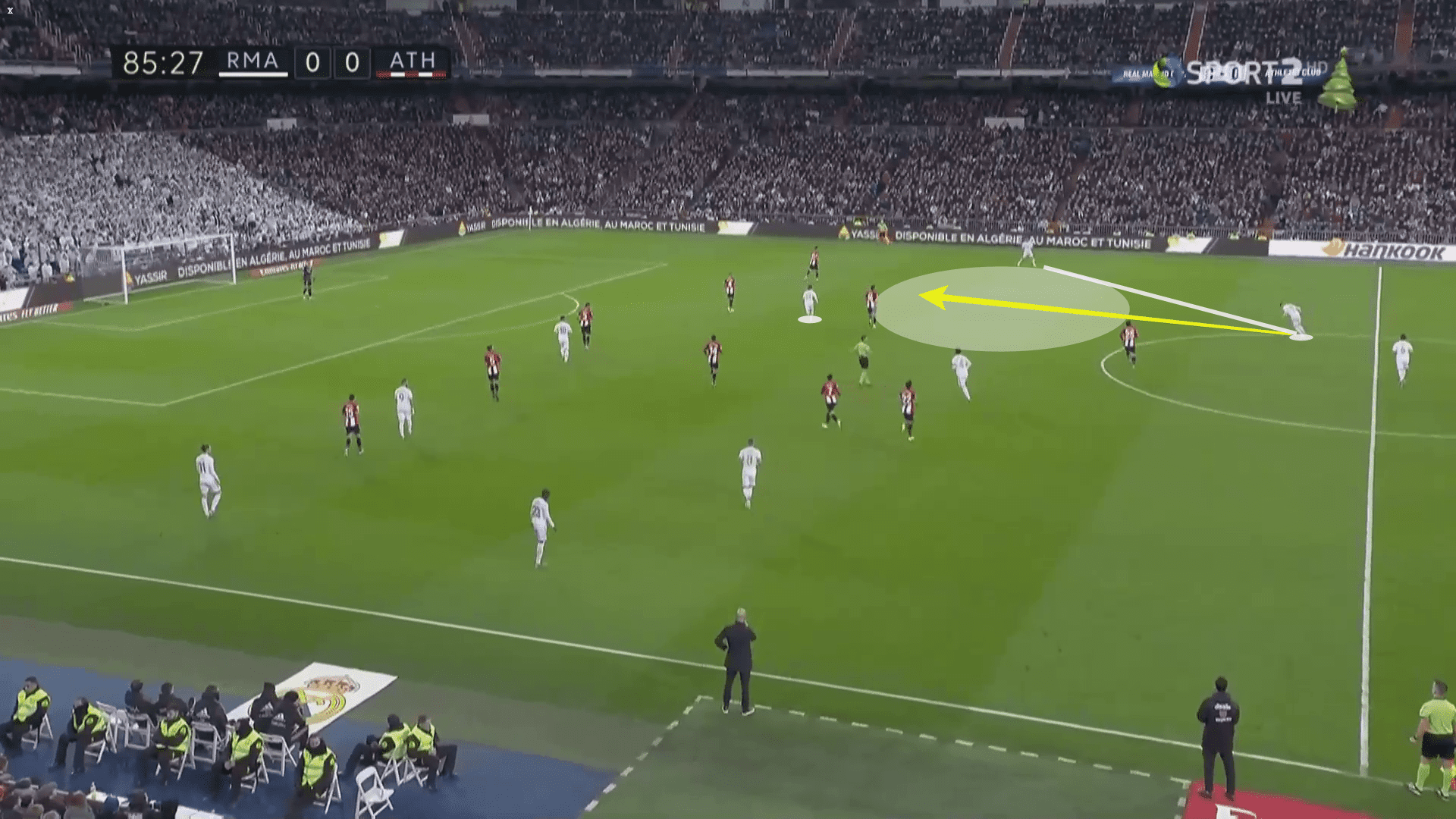
Against Athletic, that was just what was needed. His energy and drive would have served so as to disrupt Garitano’s defensive set-up, pulling defenders out of position to cover should he beat the midfield press. Instead, Modrić would occupy a more static, advanced position, and posed less of a threat. The failure to replace Marcos Llorente in the summer means that Valverde is the second choice holding midfielder in Zidane’s squad, but this was the clearest indication yet that Zidane and Real Madrid must prioritise signing a defensive midfielder who can allow Valverde to sihne in a more advanced role, rather than the likes of Paul Pogba to displace the youngster.
Conclusion
With an xG score of 2.59 vs 0.61, this was a game that Real Madrid really should have won. It was not for tactical issues or a poor strategy that they failed to do so, rather that their strikers were just not clinical enough on the day. That said, Garitano and Athletic did force Real Madrid to play in a way which suited them perfectly, using the defensive change of system to baffle Real Madrid early on and then to force them wide, playing on Athletic’s terms. There should be no major signs for concern from Zidane, but he could do well to assess whether he needs an offensive central midfielder in January or whether the money could be better invested elsewhere if he is to make this side a team of title contenders.

If you love tactical analysis, then you’ll love the digital magazines from totalfootballanalysis.com – a guaranteed 100+ pages of pure tactical analysis covering topics from the Premier League, Serie A, La Liga, Bundesliga and many, many more. Buy your copy of the December issue for just ₤4.99 here





Comments